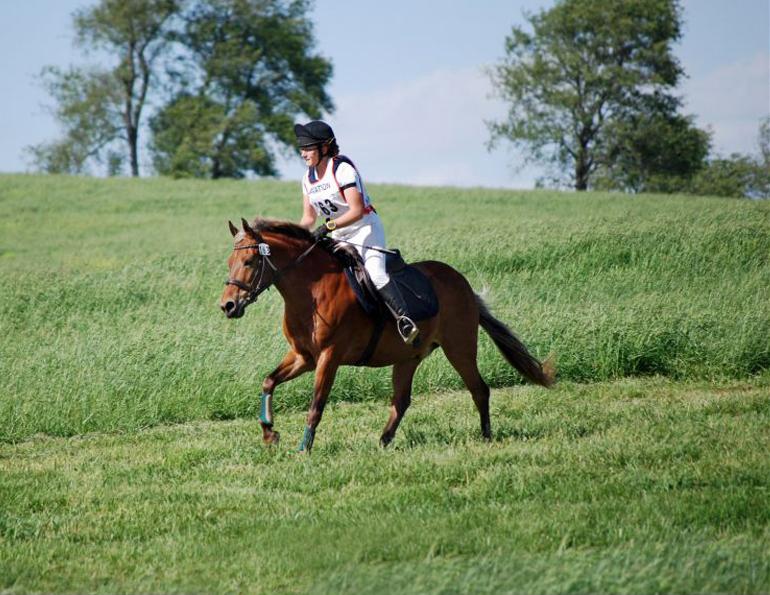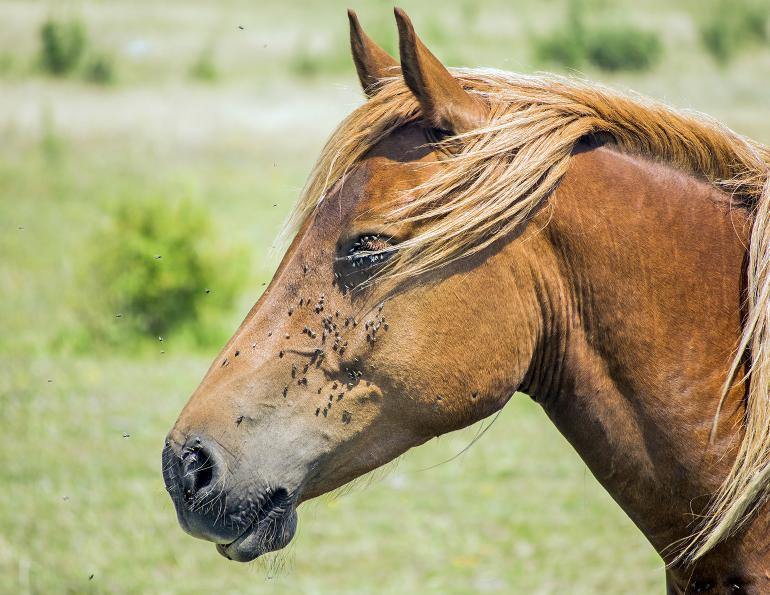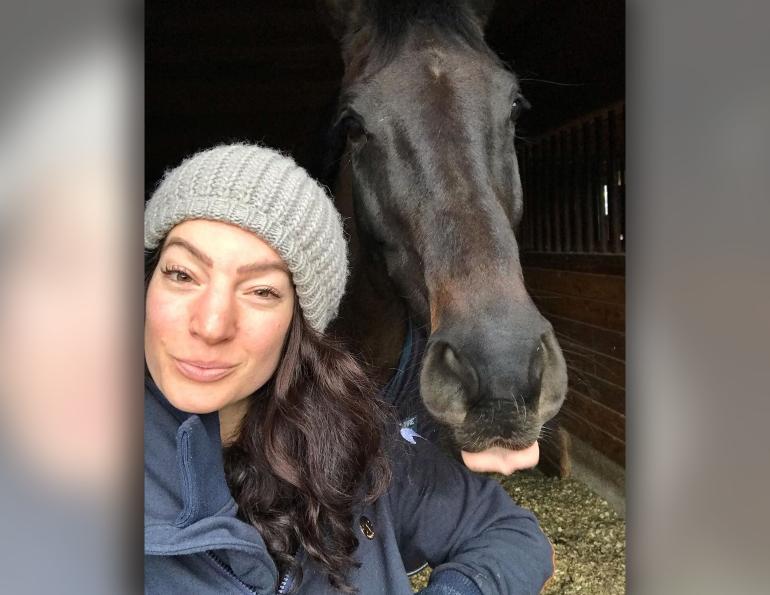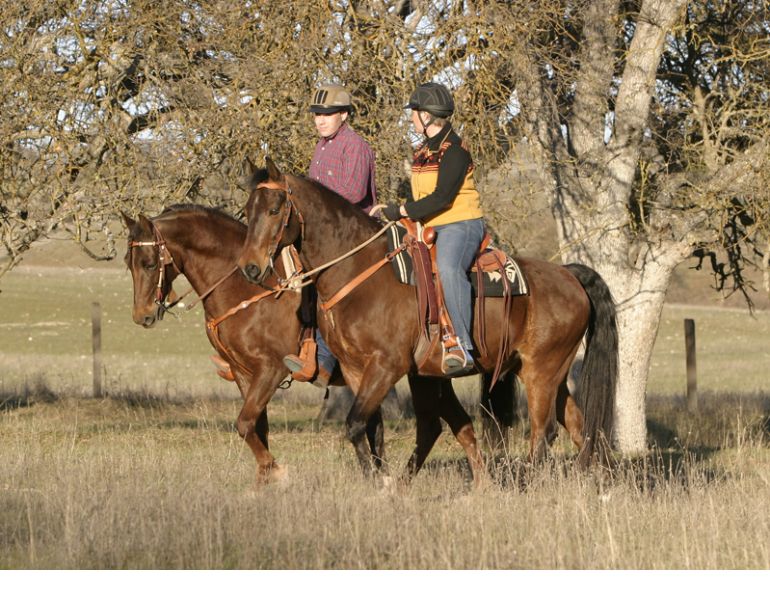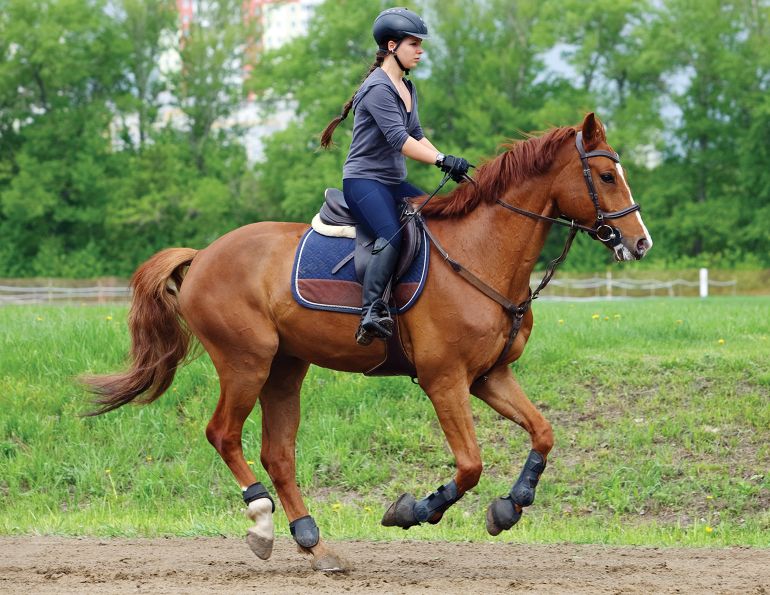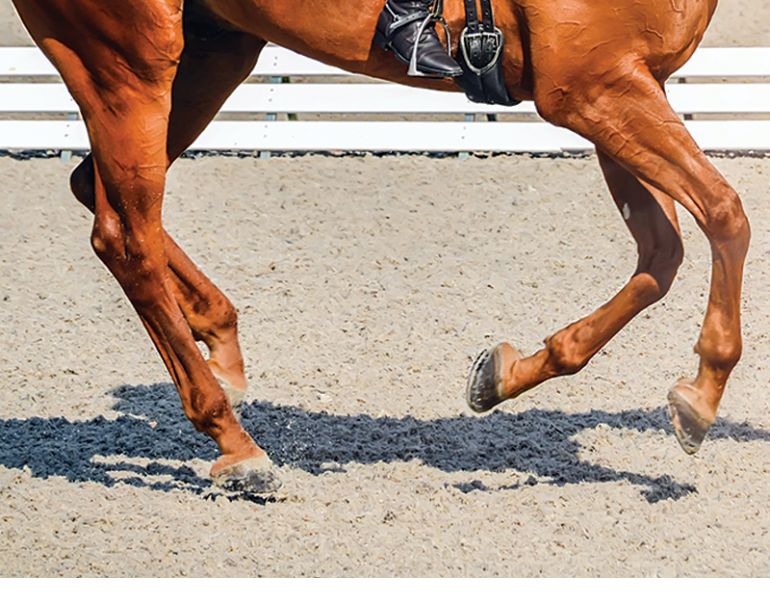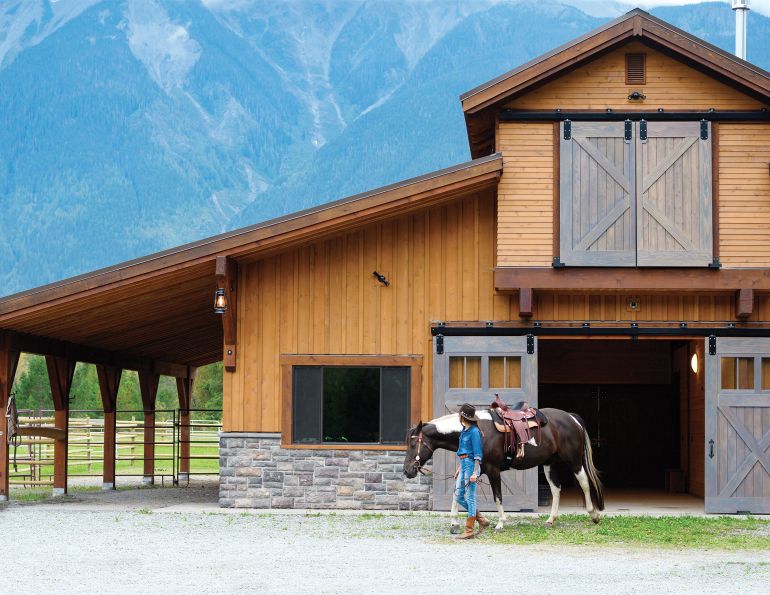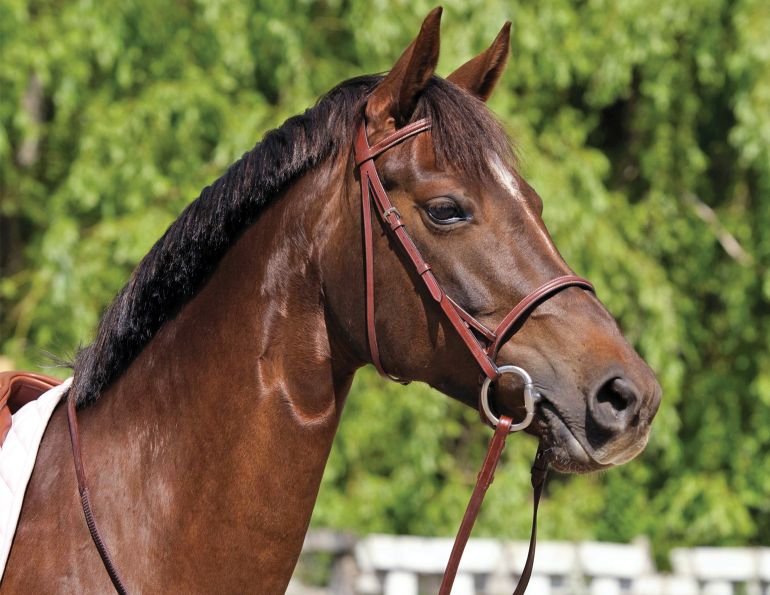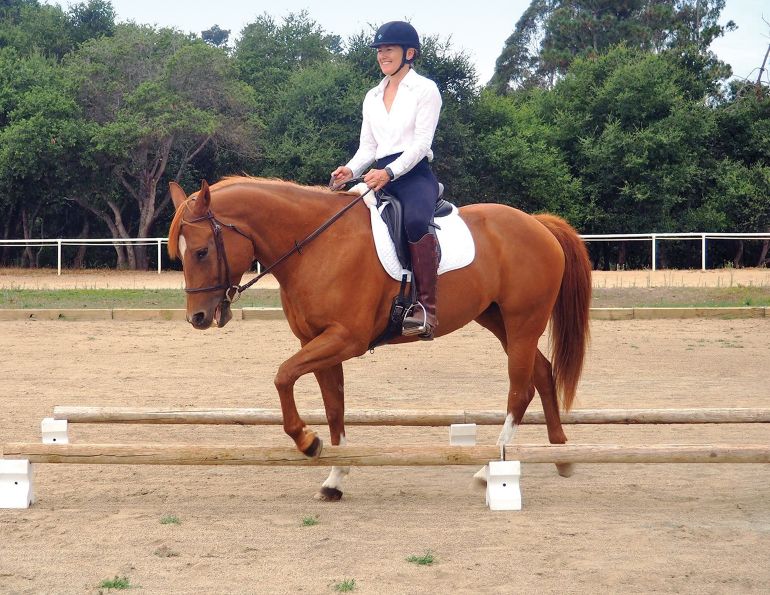By Lesley Stevenson
Throughout the world, horsemen employ many different methods of conditioning the horse. And indeed there are quite a few different "programs" that result in a fit athlete. But most programs focus on the aspects of the horse's fitness that are the most visible - their musculature and their aerobic capacity (cardiovascular fitness) - without enough thought to strengthening bones, tendons, and ligaments. With a program that does not sufficiently allow for progressive strengthening of those important structures, the risk of injuries in those areas is greatly increased. The key is long slow distance (LSD) training.
Horses have evolved to be moving all of the time. Living in a stall 23 hours a day is extremely unnatural for them. Even being locked up half a day is significantly limiting the amount of daily movement that is natural to the horse. When possible, it's best to let horses live naturally out in a large field. Horses that live outside are often the soundest...and the happiest. They will be moving much of the time, and will develop fairly strong bones, tendons, and ligaments even with little training under saddle.
If living outside in a large field with lots of (preferably rugged) terrain to roam on is not an option, then the LSD must be done under saddle. Lots of LSD (mix of walking and some trotting) initially on firm ground is the best way strengthen bones, tendons, and ligaments. How much? The more the better. But when building fitness from scratch or coming back from injury, I like to start out with 20 minutes and build to an hour or more per day of mostly walking. This is over the course of about a month. To really do it right (which some people don't want to take the time to do), add another month of LSD incorporating more and more trotting, and adding hill work. Walking up and down hills "on the aids" is one of the most beneficial exercises you can do for your horse - a total body workout with minimal pounding on their legs.
After the initial period of strengthening on firm ground, working over a variety of surfaces (from roads or stony tracks to rough or soft, muddy going) is good for developing overall tendon strength and elasticity. Hard ground is the best for strengthening bones, tendons, and ligaments. Rough, uneven, and muddy ground causes slight twisting of the limbs, which stimulates the tendons to adapt to different strains. Don't make the common mistake of only riding on "perfect" footing. Walking and some trotting work on less than perfect footing will make your horse less prone to injury in the long run.
Working on hard ground only will make tendons strong but somewhat inflexible. Working on soft ground only will not develop sufficient bone and tendon strength. A carefully thought out combination of the two is what will produce the best results.
Proper shoeing is also an essential part of your plan to condition for soundness. My advice is to really put in the effort to find the best farrier you have available to you, as the farrier can really make or break your long term efforts to keep your horse sound.
When the horse is a solid two months (or more if coming back from injury) into LSD work, bones, tendons, and ligaments are strong enough to start more serious work. Dressage, jumping, and galloping can begin gradually. Continue with the LSD work as well to keep adding to the strength of the foundation.
Bones and tendons can take years of consistent and progressive training to reach optimal strength. But this early foundation of LSD work only will go a long ways towards preventing injuries. If a horse is put into work without this foundation, he may appear to be coming along nicely in terms of cardiovascular and muscular fitness. But the bottom may drop out at any moment with damage to tendon or ligament. This can occur suddenly, or insidiously and gradually over time. When that happens you are back to square one. Sometimes the old Tortoise and the Hare story is true: slow and steady does win the race.
Article Source: www.EzineArticles.com
Lesley Stevenson is an Advanced 3 star three-day event rider/trainer/coach. She is a graduate of Jimmy Wofford's training program. She also has an upper level dressage background with Spanish Riding School theories. Lesley was USET long listed in the years 2002-2004, during which she completed the Radnor** and the Fair Hill International***. She has also competed successfully through Fourth Level Dressage, with scores to 75%. Lesley is available for lessons and clinics, and is also available for online coaching at www.MyVirtualEventingCoach.com.
Main Article Photo: Five Furlongs Photography/Flickr



